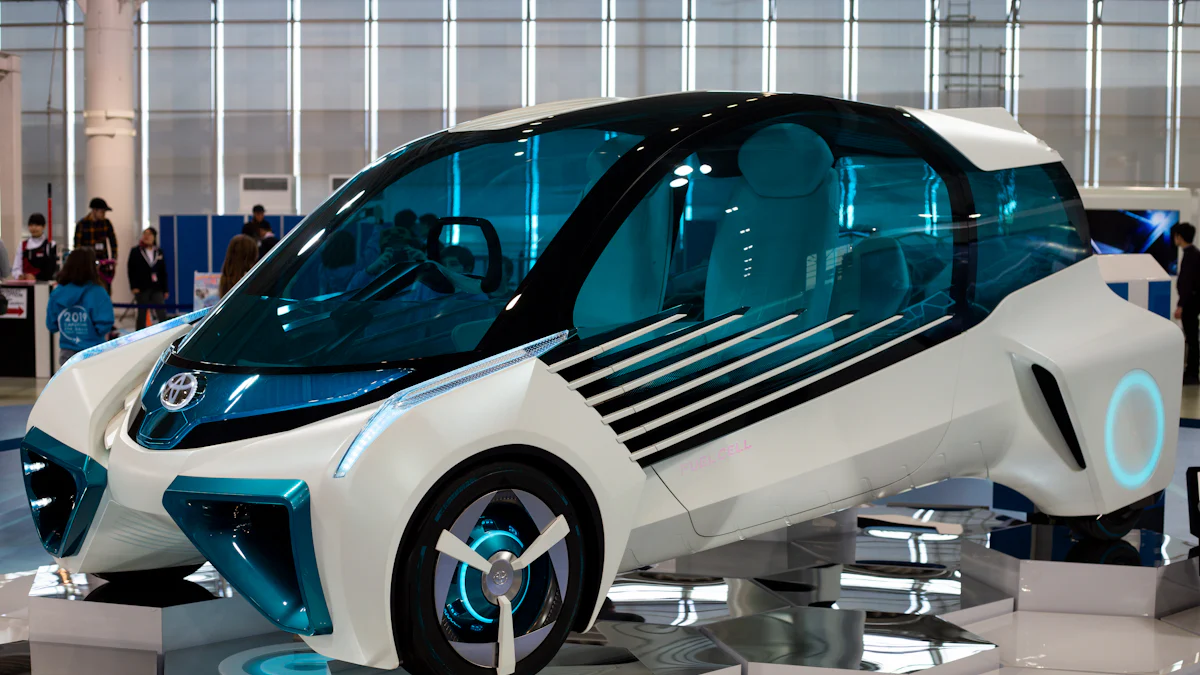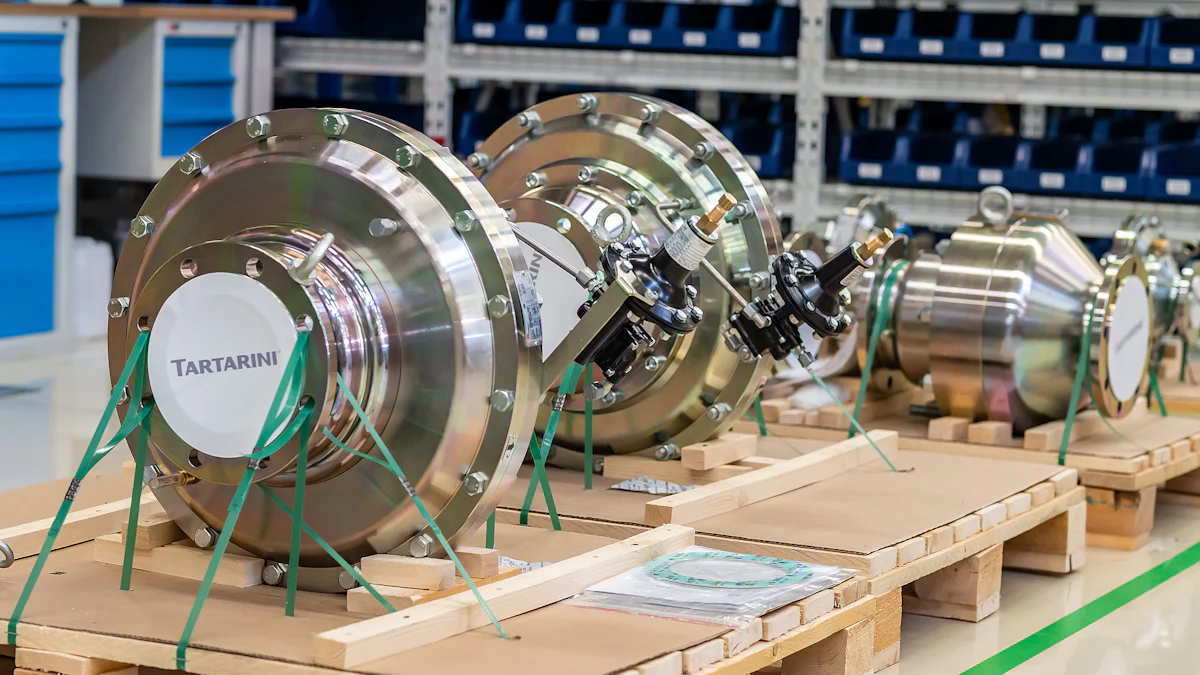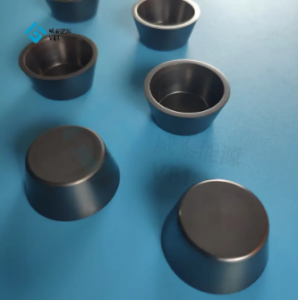
A fuel cell system 電気化学反応による電気を発生させる画期的な技術です。 従来の燃焼方式とは異なり、水素と酸素を組み合わせ、副産物として電気、熱、水を生成します。 このプロセスは、 fuel cell stack、化学エネルギーを電気エネルギーに変える責任がある中心の部品。 燃料電池は驚くべき効率と作動し、しばしば60%を上回り、水だけを排出し、それらをきれいで、持続可能なエネルギーソリューションにします。 彼らの静かな操作とスケーラビリティは、温室効果ガス排出量を削減し、グローバルなエネルギー課題に対処するための重要なツールとして、その魅力を高めます.
要点
- 燃料電池システムは、主に水素を使用して電気化学反応を介して電力を生成し、有害な排出量をゼロにし、副産物としてのみ水を生成します.
- 60%を上回る効率によって、燃料電池は従来の燃焼エンジンと比較してより有効なエネルギー ソリューションで、さまざまな用途に理想的です.
- 燃料電池は静かで作動し、小さい装置に大きい産業システムに動力を与えられたからの多様なエネルギー必要性に会うために拡大することができます.
- プロトン・エクスチェンジ・メンブレン(PEM)やソリッド・オキサイド・燃料電池(SOFC)などの燃料電池の種類は、特定の用途に対応し、業界全体の適応性を示すものです.
- 燃料電池システムは環境の持続可能性に著しく貢献します 温室効果ガス排出量の削減 クリーンエネルギー源への移行をサポート.
- 燃料電池の連続電源は、燃料が利用可能な限り、病院やデータセンターのバックアップ電力などの重要なアプリケーションに信頼性があります.
- 燃料電池技術の革新、を含む 水素の生産の進歩 そして、ハイブリッドシステムは、持続可能なエネルギーの未来の道を舗装しています.
燃料電池システムとは?
定義と目的
燃料電池システムとは 高度なエネルギー技術 電気化学反応による電気を発生させる設計 従来の燃焼ベースの方法とは異なり、水素または他の燃料の化学エネルギーを電気エネルギーに直接変換します。 水素が燃料として使用される場合、有害排出物を排除し、副産物として水と熱だけを生成します。 燃料電池システムの主な目的は、さまざまな用途にクリーンで効率的で持続可能なエネルギーソリューションを提供することです.
燃料電池システムは多目的で、できます 広い範囲に動力を与えます 装置およびシステム。 これらは、水素駆動車や、家庭・事業・産業施設の固定発電など、輸送に使用されます。 さらに、ノートパソコンやバックアップパワーシステムなどのポータブルデバイス用の信頼性の高いエネルギー源として機能します。 高効率かつ最小限の環境影響で動作する能力は、グローバルエネルギーと気候の課題に対処する上で重要なコンポーネントとなります.
燃料電池システムの主な特徴
燃料電池システムは従来のエネルギー技術からそれらを区別する複数の独特な特徴を所有しています:
High Efficiency: 燃料電池は、化学エネルギーを直接電力に変換し、多くの場合60%を超える効率を実現します。 この効率性は、多くの燃焼エンジンのそれを超え、より効果的なエネルギーソリューションにします.
Zero Emissions: : : 水素が燃料として使用されるとき、副産物だけが水と熱です。 二酸化炭素排出量や大気汚染物質を排除し、クリーンな空気に貢献し、温室効果ガス排出量を削減します.
Quiet Operation: 燃料電池システムは、可動部の欠如により、騒音が最小限に抑えられます。 住宅地や病院など、騒音低減が不可欠である用途に適した機能です.
スケーラビリティ: 燃料電池システムは、多様なエネルギーニーズに対応するためにスケールアップできます。 スマートフォンなどの小型デバイスや、実用的な発電所などの大型システムなど、適応性を示すことができます.
燃料源の多様性: : : 水素は最も一般的な燃料ですが、燃料電池は他の燃料や飼料ストックも活用できます。 この柔軟性は、さまざまな業界に潜在的用途を広げます.
連続的な電源: : : 電池とは異なり、燃料電池は再充電を必要としません。 燃料が供給される限り絶えず電気を作り出し、信頼できるエネルギー源を保障します.
燃料電池システムは、エネルギー生成への変革的なアプローチを表しています。 効率性、環境上の利点、適応性の組み合わせは、持続可能な未来のための重要な技術として位置します.
How Does a Fuel Cell System Work?

The Electrochemical Process
燃料電池システムは、化学エネルギーを電気エネルギーに変える電気化学プロセスによって作動します。 水素、第一次燃料、燃料電池の陽極側に入るとこのプロセスが始まります。 アノードでは、触媒が水素分子をプロトンや電子に分割します。 陽子は電解物を通過し、電子は外部回路を通過し、電流を生成します.
陰極側では、空気からの酸素はプロトンと電子が水を形成するために反応します。 この反応は副産物として熱を解放します。 燃焼とは異なり、このプロセスは燃焼燃料を含みません。これは有害な排出量を排除します。 代わりに、水と熱だけを生成し、環境に優しいエネルギーソリューションにします。 従来のエネルギーシステムの効率を上回る電気化学プロセスは非常に有効、頻繁にです.
「燃料電池は、水素と酸素を組み合わせて、水と熱を副産物として発電します。」 この革新的なアプローチは、燃料電池技術のクリーンで持続可能な性質を強調しています.
燃料電池システムの部品
燃料電池システムは、電気を生成するために一緒に働く複数の主要コンポーネントで構成されています
- 燃料電池 スタック: : : 電気化学反応が起こるシステムの中心。 必要な出力を生成するために一緒に積み重ねられた複数の個々の細胞を含んでいます.
- 燃料供給システム: 水素などの燃料をアノードに納入 水素燃料電池では、このシステムは安定した燃料供給を保障する貯蔵タンクおよび調整装置を含んでいます.
- エア供給システム:空気から陰極に酸素を供給します。 このシステムは、電気化学反応のための酸素の可用性を保証します.
- Electrolyte: : : 陽子が電子をブロックしながら陰極から陰極に移動することを可能にする媒体。 燃料電池技術により電解液の種類が異なります.
- カタリスト:陽極および陰極で化学反応を促進します。 プラチナは、多くの燃料電池システムにおいて触媒として用いられています.
- Power Conditioning Unit: 燃料電池スタックによって生成される直接電流(DC)の電力を、実用的な使用のために交流電流(AC)に変換します.
各コンポーネントは、燃料電池システムの効率性と信頼性を確保するために重要な役割を果たしています。 これらのコンポーネントの統合により、燃料や酸素が供給される限り、システムを継続的に動作させることができます.
燃料電池システムにおけるエネルギー発電
燃料電池システムにおけるエネルギー生成プロセスは、効率的で持続可能なプロセスです。 水素は、燃料電池が電力に変換される化学エネルギーを蓄える主要なエネルギーキャリアとして機能します。 水素が燃料電池を入るとき、それは酸素と電気化学反応を受け、燃焼なしで電気を作り出します。 このプロセスは、燃料と空気の安定した流れがあることを提供された連続的な電源を保証します.
燃料電池は従来の燃焼エンジンよりかなり高い60%を超過する効率を達成できます。 また、騒音低減が不可欠である用途にも適しています。 米国エネルギー省は、水素燃料電池が水だけを放出し、重要な気候課題に対処し、環境への影響を削減することを強調しています.
燃料電池システムの能力は、持続可能なエネルギーソリューションへのグローバルシフトにおける変革的な技術として、クリーンエネルギーを生成します。 彼らの汎用性とスケーラビリティは、車両の動力を与えられたり、家や企業に電力を供給したり、さまざまなアプリケーションに最適です.
燃料電池の種類は?
燃料電池は特定のエネルギー必要性および適用を満たすように設計されているさまざまなタイプ入って来ます。 主に、その動作温度、効率、および潜在的な使用に影響を与える電解液の種類に依存します。 以下は、燃料電池の3つの著名なタイプです
Proton Exchange Membrane Fuel Cells (PEMFC)
プロトン交換膜燃料電池は、多くの場合、PEMFCと呼ばれ、最も広く使用されている燃料電池技術の一つです。 それらは、通常80°Cのまわりで比較的低温で作動し、それらに速い開始時間の要求の適用のために適したようにします。 PEMFCは固体ポリマー電解質を使用して、電子をブロックしながら陰極から陰極への陽子を実行します。 この設計は有効なエネルギー転換を保障します.
PEMFCは、コンパクトサイズや軽量構造により、水素駆動車などの輸送に一般的に使用されています。 また、ポータブル電源システムやバックアップ電源のアプリケーションもあります。 高電力密度を発揮し、サイレントで都市環境に理想的な機能です。 しかし、それらは燃料として純粋な水素を要求します、それは高度の水素貯蔵の解決を必要とします.
「PEM燃料電池は、米国エネルギー省によると、クリーンエネルギー技術の礎を築き上げ、高度に効率的かつ多用途です.
Solid Oxide Fuel Cells (SOFC)
固体酸化物燃料電池、またはSOFCは、通常600°Cと1,000°Cの間で高温で作動します。 水素、天然ガス、バイオガスなど、さまざまな燃料を使用することができます。 SOFCは、極端な条件下で優れた安定性と耐久性を提供する固体セラミック電解液を採用しています.
SOFCは、家庭、事業、産業施設の電力供給など、固定発電に特に適しています。 燃料を内部に改革する能力は、外部燃料処理の必要性を排除し、効率を高めます。 これらの燃料電池は、結合された熱および電力(CHP)システムで使用される場合、60%およびより高いアプローチの効率を達成できます。 その利点にもかかわらず、高い動作温度は、コストを増加させることができる堅牢な材料を必要とします.
Alkaline Fuel Cells (AFC)
AFCの略称であるアルカリ燃料電池は、最も古い種類の燃料電池技術の一つです。 それらは電気化学反応を促進するために水酸化カリウムのようなアルカリの電解物を使用します。 AFCは、一般的に60°Cと90°Cの間で、比較的低温で動作し、水素と酸素を電気に変換するための高効率で知られています.
AFCは、宇宙船や衛星のパワーアップなど、宇宙用途に広く使用されています。 制御された環境で信頼性と効率的なエネルギーを提供する能力は、これらは、このような特殊な用途に好まれる選択肢になります。 しかし、AFCは二酸化炭素に敏感で、その性能に影響を与えることができ、純粋な水素および酸素の供給と適用への使用を制限します.
各タイプの燃料電池は特定の適用に合わせる独特な利点を提供します。 それぞれの特徴を理解することで、業界は最も適した燃料電池システムを選択してエネルギーニーズを満たすことができます.
Molten Carbonate Fuel Cells (MCFC)
Moltenの炭酸燃料電池(MCFC)は600°Cから700°Cまでの温度で作動する高温燃料電池の技術を表します。 MCFCは、60%に接近する、驚くべき効率レベルを達成することを可能にします。 天然ガスやバイオガスなどの燃料を水素に内部的に改質する能力は、他の燃料電池の種類とは別に設定します。 この機能は、外部燃料処理の必要性を排除し、システムを簡素化し、全体的な効率を向上させる.
MCFCの特徴
MCFCは、特定のアプリケーションに適したユニークな属性を持っています
- 高い実用温度: : : 高温で、MCFCは、水素、天然ガス、さらには再生可能なバイオガスを含む様々な燃料を使用することができます。 この柔軟性は、アプリケーションスコープを拡大します.
- 内部燃料の変形: MCFCは炭化水素燃料を直接システム内の水素に変えることができます。 外部燃料処理システムの複雑さとコストを削減します.
- 二酸化炭素の許容: : : 燃料電池の種類とは異なり、MCFCは燃料流で二酸化炭素を許容することができます。 これは、CO2が豊富なガスを生成する産業プロセスと互換性があります.
- 結合された熱および力(CHP)の可能性: : : 運転中に発生する熱は、加熱または追加の発電に使用され、システム全体の効率性を向上させることができます.
MCFCの適用
MCFCは、特に大規模な産業および商用アプリケーション向けに、静止した発電に優れています。 電力と熱の両方を発生させる能力は、組み合わせた熱と電力(CHP)システムに最適です。 二酸化炭素を含有する廃棄物ガスとの互換性により、MCFCの化学製造・石油精製などの産業.
たとえば、化学プラントは、MCFCシステムを使用して、廃棄物ガスを内部プロセスの熱を利用して電力に変換できます。 エネルギーコストを削減し、環境への影響を最小限に抑えるデュアル機能です.
MCFCの利点
- 燃料の柔軟性: MCFCは、バイオガスのような再生可能エネルギーオプションを含む、幅広い燃料で動作することができます。 この適応性は、クリーナーエネルギー源への移行をサポートしています.
- High Efficiency: : : 燃料を内部に改革し、廃棄物熱を活用する能力は、MCFCが従来の発電方法の有効化または上回る効率を達成することを可能にします.
- 環境面でのメリット: : : 再生可能エネルギー燃料と二酸化炭素排出量を削減することにより、MCFCは温室効果ガス排出量の削減に貢献します.
- スケーラビリティ: MCFCシステムは、小規模な施設や大型産業の複合施設のエネルギー要求に応じるためにスケールアップすることができます.
挑戦と未来の可能性
MCFCは多くの利点を提供しますが、高い実用温度は費用および維持の条件を高めることができる強い材料を要求します。 しかし、物質科学の進歩は、これらの課題に対処することを目指しています。 研究者は、MCFCシステムの耐久性と寿命を向上させるための方法も探求しています。広範囲にわたる採用のために、より費用効果が大きいようにしています.
MCFCは、持続可能なエネルギーソリューションへのグローバルシフトに大きな約束を抱えています。 多様な燃料源から電力を効率的に生成する能力は、信頼性の高いエネルギー生産を維持しながら、炭素のフットプリントを削減しようとする業界にとって貴重な技術として位置付けられます.
Applications of Fuel Cell Systems

燃料電池システム クリーンで効率的な、そして多用途なソリューションを提供することで、エネルギーを革命化しました。 それらの適応性は、多様なエネルギー要求に対応し、様々な産業やアプリケーションにサービスを提供することができます.
Transportation
燃料電池システムは交通機関のセクターを変えることの重要な役割を担います。 自動車、バス、トラックなどの水素動力を与えられた車両は、燃料電池を利用して推進のための電力を生成します。 これらの車両は、水蒸気だけを放出し、従来の内部燃焼エンジンに環境にやさしい代替手段を与えます。 水素の高エネルギー密度により、燃料電池車がより長い運転範囲を達成し、長距離輸送に最適です.
たとえば、都市の大気汚染を削減するために、複数の都市が水素発電バスを採用しています。 これらのバスは静かで効率的に運行し、公共の交通機関のための持続可能なソリューションを提供します。 さらに、燃料電池システムは、鉄道、船舶、さらには航空機に統合され、さまざまな輸送モードの脱炭素化の可能性を示しています.
米国エネルギー省によると、「水素燃料電池車は、従来の輸送にクリーンで効率的な代替手段を提供し、よりグリーンな未来に貢献します。」.
Stationary Power Generation
燃料電池システムは、家、企業、産業施設の信頼性の高い電力を提供し、静止した発電に優れています。 燃料が供給される限り絶えず作動する能力はそれらに信頼できるエネルギー源を作ります。 大規模用途向け、技術など Molten Carbonate Fuel Cells (MCFC) 高効率・燃費の柔軟性により、.
MCFCは650°C前後の高温で作動し、天然ガス、バイオガス、石炭などの燃料を使用することができます。 この機能は、外部のリフォームの必要性を排除し、システムを簡素化し、コストを削減します。 廃棄物の熱回収システムと組み合わせると、MCFCは80%を超える全体的な効率を達成することができます。 化学製造や石油精製などの産業は、廃棄物ガスを内部プロセスの熱を利用して電力に変えることができるため、これらのシステムから大きな利益をもたらします.
例えば、燃料電池システムを搭載した商業ビルは、電力を現場で生成し、グリッドの信頼性を減らし、炭素排出量を削減することができます。 このアプリケーションは、静止燃料電池システムの汎用性と環境の利点を強調しています.
ポータブルデバイス
燃料電池システムもポータブル電力ニーズに対応し、ノートパソコン、スマートフォン、バックアップパワーユニットなどの機器のコンパクトで軽量なソリューションを提供します。 再充電なしで連続的な力を提供する能力は、特定のシナリオで従来の電池よりも優れています。 ポータブル燃料電池は、リモートエリアや緊急時でも電力へのアクセスが制限されています.
屋外の熱狂者のために、携帯用燃料電池はキャンプ装置および通信装置のための信頼できるエネルギー源として役立ちます。 医療分野では、停電時に重要な機器を動力として、未処理の動作を保証します。 燃料電池の静かで効率的な性質は、そのような用途の適合性を高めます.
「ポータブル燃料電池は、業界の専門家が指摘したように、オフグリッドと緊急シナリオのための信頼性の高いエネルギーソリューションを提供し、途切れない電源を確保します.
燃料電池システムは交通機関、静止した発電および携帯用装置を渡る驚くべき多様性を示します。 クリーンで効率的なエネルギーを提供する能力は、環境にやさしいエネルギーソリューションの需要が高まっています.
Advantages of Fuel Cell Systems
環境面でのメリット
燃料電池システムはきれいなエネルギーを作り出すことによって重要な環境の利点を提供します。 従来の燃焼技術とは異なり、水素が燃料として機能する時に水と熱だけを放出します。 二酸化炭素、窒素酸化物などの有害汚染物質を排除し、大気汚染や気候変動に貢献します。 燃料電池システム、産業、個人を採用することにより、炭素排出量を削減し、環境劣化に対抗するグローバルな取り組みを支援することができます.
水素燃料電池は、すでに様々な用途での可能性を実証しています。 たとえば、バスやフェリーなどの公共輸送システムには、燃料電池技術を統合し、排出量を最小限に抑えています. 近年、フェリーなどの船舶に大型燃料電池を開発し、持続可能な水輸送を可能にしています. これらの進歩は、クリーンな空気を作り出し、複数のセクターにわたって温室効果ガス排出量を削減する燃料電池システムの役割を果たしています.
効率とスケーラビリティ
燃料電池システムは効率で、化学エネルギーを電気エネルギーに直接変え、エネルギー損失を最小限に抑えます。 内部燃焼エンジンなどの従来のエネルギーシステムよりも効率が向上します。 例えば、フォークリフトや空港の乗り物など、倉庫の物流や実用的な車両で使用される水素燃料電池は、エネルギー使用量を最適化しながら、信頼性の高い電力を提供する能力を示しています。 それらの高効率は、小規模および大規模アプリケーションの両方の費用対効果の高いソリューションです.
スケーラビリティは、燃料電池システムの他の重要な利点です。 ポータブル機器の電力供給から、産業業務の支援まで、多様なエネルギー要求に対応できる。 企業は燃料電池式の携帯電話、無人機、さらには航空機で実験し、適応性を実証しています。 さらに、燃料電池システムは、ユーティリティグリッドや商業ビルなどの大きなインフラを拡張できます。 この柔軟性により、燃料電池システムは、個々の消費者からグローバル産業まで、幅広いエネルギーニーズに対応できます.
静かな操作と信頼性
燃料電池システムは騒音を最小限に抑え、静的な操作が不可欠である環境に理想的です。 機械的プロセスに依存する従来のエンジンとは異なり、燃料電池は電気化学反応を介して電気を発生させます。 可動部のこの欠如は騒音レベルを低下させ、操作上の信頼性を高めます。 たとえば、水素搭載のバスやトラックは、ディーゼル車に静かな代替手段を提供し、都市部の生活の質を向上させます.
信頼性は、燃料電池システムのもう一つの特徴です。 燃料が供給される限り絶えず電気を作り出し、途切れない力を保障します。 病院やデータセンターのバックアップ電力システムなど、重要なアプリケーションでは、この機能が評価できます。 無人車やフォークリフトを含むユーティリティ車は、屋内と屋外の両方の設定で燃料電池の信頼性の高い性能から恩恵を受ける。 さまざまな条件下で一貫して機能する能力は、多様な運用要件の適合性を強調します.
燃料電池システムは環境の利点、効率、拡張性、静かな操作および信頼性を結合します。 これらの利点は、持続可能性を促進しながら、現代のエネルギー課題に対処することができる変革的なエネルギーソリューションとして位置付けています.
燃料電池システムが電池と比較する方法か?
主な違い
燃料電池システムと電池はエネルギー源として機能しますが、それらは根本的に異なる原理で動作します。 燃料電池は水素と酸素間の電気化学反応を通し、副産物として水と熱を作り出します。 対照的に、電池は電気エネルギーを化学的に貯え、必要なときに解放します。 この区別は、各技術固有の特性を与えます.
エネルギー供給: 燃料電池は燃料供給される限り連続的な力を提供し、延長操作を要求する適用のためにそれらを理想的にします。 電池は、しかし、有限のエネルギー容量を持っていて、一度枯渇させる充満を必要とします.
環境への影響: 水素燃料電池は水だけを排出し、温室効果ガス排出量ゼロでクリーンエネルギーソリューションを提供します。 電池は、操作中に環境にやさしい一方で、建設で使用される有毒物質による処分の課題を提起することができます.
ソリューション: 燃料電池は電気に化学エネルギーを直接変えることによって、60%を、超過する高性能を達成します。 電池は、エネルギー貯蔵で効率的に、充満および排出周期の間にエネルギーを失います.
アプリケーション: 燃料電池は、電力車、産業機器、バックアップシステムなどの大規模および長距離用途で優れています。 バッテリーは、コンパクトなサイズと使いやすさにより、ポータブルデバイスや短期のエネルギーニーズに適しています.
「燃料電池は、充電が必要な電池とは異なり、燃料が供給される限り継続的に電力を生成します」と、米国エネルギー省は強調します.
これらの違いは、燃料電池と電池の補完的な性質を強調し、各技術が特定のエネルギー要求に取り組む.
補完技術
燃料電池と電池は、効率性と汎用性の高いエネルギーシステムを作成するために一緒に働きます。 組み合わせた使用は、さまざまなアプリケーション間でのパフォーマンスを強化し、両方の技術の強みを活用しています.
Hybrid Systems: : : 水素動力を与えられた車を含む多くの現代車は、燃料電池および電池を統合します。 燃料電池は、ピーク要求または再生ブレーキのために過剰なエネルギーを蓄える間、推進のための第一次力を提供します。 効率性を高め、車両の範囲を拡張します.
バックアップ力: : : 遠隔地では、セルタワーのような、燃料電池は信頼できる第一次電源として役立ちます。 電池は二次貯蔵として機能し、燃料供給の中断か維持の間に途切れない操作を保障します.
ポータブルアプリケーション: : : 携帯用装置のために、電池は便利および即刻のエネルギー貯蔵を提供します。 燃料電池は、特にオフグリッドや緊急のシナリオで、長持ちする電源を提供することでこれを補完します.
グリッドサポート: 燃料電池はピークの要求期間の間に電気を発生させることによって格子安定性に貢献します。 電池は太陽や風などの再生可能エネルギー源からの余剰エネルギーを貯え、必要に応じて解放します。 共に、バランスのとれた持続可能なエネルギーエコシステムを生み出します.
「燃料電池と電池は互いに補完し、業界の専門家によると、効率と信頼性を最大化するハイブリッドシステムを作成します.
燃料電池と電池の相乗効果は、エネルギーシステムに革命をもたらす可能性を示しています。 これらの技術を組み合わせることで、多様なエネルギー課題に対応し、よりクリーンで持続可能な未来への道を切り拓きます.
燃料電池システムの挑戦と未来
Current Limitations
燃料電池システムは、革命的ながら、広範囲にわたる採用を妨げるいくつかの課題に直面しています。 1つの重要な制限は、水素の生産および貯蔵、ほとんどの燃料電池のための第一次燃料にあります。 水素は、電気分解や天然ガス改質などのプロセスによって生成されなければならない。エネルギー集中力とコストを要する。 また、水素を蓄えるには、効率的な輸送と使用のために圧縮または液化する必要があるため、高度なインフラが必要です.
燃料電池部品の耐久性とコストを伴います。 燃料電池で使用される触媒は、多くの場合、プラチナから作られ、高価で時間をかけて劣化する容認性があります。 これにより、システムの全体的な寿命と経済の両立性に影響を及ぼします。 さらに、固体酸化物燃料電池(SOFC)などの特定の燃料電池タイプの高温、極端な条件に耐えることができる要求の厳しい材料、製造コストを増加させる.
既存のエネルギーインフラへの燃料電池システムの統合も困難を示しています。 たとえば、従来の化石燃料ベースのシステムから水素ベースのシステムへの移行には、新しい技術や流通ネットワークへの大きな投資が必要です。 これらの制限は、継続的な研究開発の必要性を強調し、技術的および経済的障壁を克服する.
イノベーションとトレンド
これらの課題にもかかわらず、燃料電池技術の進歩は進んでいます。 研究者は、プラチナ触媒を交換し、コストを削減し、耐久性を向上させるための代替材料を探求しています。 例えば、非貴金属触媒と先進のナノマテリアルは、燃料電池の効率性と長寿を高めることを約束します.
水素製造方法も進化しています。 再生可能エネルギー発電による電気分解により生成されたグリーン水素は、持続可能な代替手段としてトラクションを獲得しています。 このアプローチは、水素生産に伴うカーボンフットプリントを削減し、気候変動に対抗するグローバルな取り組みと整合します。 また、ソリッドステートストレージや高度な圧縮技術などの水素貯蔵の革新は、物流課題に取り組む.
燃料電池と電池を組み合わせたハイブリッドシステムの開発は、他の重要な傾向を表しています。 これらのシステムは、輸送およびグリッドサポートなどのアプリケーションに効率的で信頼性の高いエネルギーソリューションを提供する、両方の技術の強みを活用しています。 たとえば、水素搭載車は、燃料電池と電池を組み合わせて性能を最適化し、運転範囲を拡張することが多い.
世界中の政府や産業は燃料電池の研究やインフラに投資しています。 水素協議会や全国の水素戦略のような取り組みは、各セクターにおける燃料電池システムの採用を加速することを目的としています。 これらの取り組みは、クリーンエネルギーの移行の礎石として燃料電池の増大認識を強調しています.
寧波VETエネルギー技術有限公司の役割.
ニンポー VET エネルギー技術 燃料電池技術の進歩に重要な役割を果たしています。 燃料電池システムに関する課題に取り組む革新的なソリューションの開発に注力しています。 最先端の研究開発とエンジニアリングの専門知識を活用することで、Ningbo VET Energy Technology Co.は、より効率的な耐久性と費用対効果の高い燃料電池コンポーネントの創造に貢献します.
業界のパートナーや研究機関と連携し、イノベーションを推進しています。 たとえば、触媒性能の向上と材料コストの削減に取り組み、燃料電池の経済性を高めています。 また、Ningbo VET Energy Technology Co.は、水素貯蔵・流通技術の開発に投資し、堅牢な水素インフラの確立を支援しています.
ニンポー VET エネルギー技術 また、事業の持続可能性を優先します。 グリーン水素の生産と環境にやさしい製造プロセスに注力することで、燃料電池システムの環境影響を削減するというコミットメントを実証しています。 その貢献は、クリーンエネルギー部門のリーダーとして位置し、業界全体の燃料電池技術の採用を促進します.
寧波VET エネルギー技術 Co.は、燃料電池業界におけるイノベーションとリーダーシップを発揮し、持続可能なエネルギーの未来に向けた取り組みを推進しています。 ツイート
燃料電池システムの可能性を強調し、エネルギーの発生を変革する。 Ningbo VET Energy Technology Co.は、現在の限界に対応し、新たなトレンドを埋め込むことにより、クリーンエネルギーの未来を形づける上で重要な役割を果たしています.
燃料電池システムは従来の燃焼方法にきれいで、有効な代わりを提供するエネルギー技術の変革的な飛躍を表します。 化学エネルギーを直接、60%を超える効率で電力に変えることで、気候変動の課題に取り組む。 彼らの汎用性は、輸送、静止電力、およびポータブルデバイスに及ぶため、持続可能な未来に統合します。 寧波VETエネルギー技術有限公司のような企業は、この技術を推進し、イノベーションを推進し、アプリケーションを拡大する上での充電をリードします。 水素燃料電池が進化し続け、カーボンフリーのエネルギーランドスケープをつくります.
よくあるご質問
燃料電池システムとは?
燃料電池システムは、水素を燃料として使用し、空気からの酸素を電気化学反応によって発電します。 従来の燃焼方法とは異なり、有害排出なしで電気・熱・水が生成されます。 これにより、さまざまな用途に適したクリーンで効率的なエネルギーソリューションが可能になります.
燃料電池はどのように電池と異なるのですか?
燃料電池と電池の両方がエネルギーを提供しますが、それらは異なる動作する。 燃料電池は燃料と酸素が供給される限り絶えず電気を発生させます。 対照的に、電池はエネルギーを化学的に貯え、枯渇したら再充電を要求します。 燃料電池は長期間のエネルギー必要性に適している間、長期適用にとって理想的です.
What are the main components of a fuel cell system?
燃料電池システムには、いくつかの重要なコンポーネントが含まれています
- Fuel Cell Stack: : : 電気化学反応が起こる中心.
- 燃料供給システム: 水素などの燃料をアノードに納入.
- エア供給システム: 陰極に酸素を供給します.
- Electrolyte: 電子をブロックしながらプロトンを渡すことができます.
- カタリスト: 化学反応を促進します.
- Power Conditioning Unit:直流(DC)を交流電流(AC)に変換します.
各コンポーネントは、システムの効率性と信頼性を確保するために重要な役割を果たしています.
What types of fuel cells are available?
燃料電池はさまざまなタイプで、下記のものを含んでいます:
- Proton Exchange Membrane Fuel Cells (PEMFC): 交通機関および携帯用装置のために適した.
- Solid Oxide Fuel Cells (SOFC): 静止した発電に最適です.
- Alkaline Fuel Cells (AFC): スペースアプリケーションで一般的に使用されます.
- Molten Carbonate Fuel Cells (MCFC): 産業および大規模電力必要性のために有効.
各タイプは、動作温度、効率性、燃料の互換性に基づいて特定のアプリケーションを提供します.
What are the advantages of fuel cell systems?
Fuel cell systems offer several benefits:
- High Efficiency: 化学物質エネルギーを直接電力に変換し、損失を最小限に抑えます.
- Zero Emissions: 水素を燃料として使用する際に水と熱だけを生成します.
- Quiet Operation: 可動部の欠如により、ノイズを最小限に抑えます.
- スケーラビリティ:小型電子機器から大型産業用システムまでの電力機器.
- 連続的な電源: 燃料が利用できる限り途切れないエネルギーを提供して下さい.
これらの特徴は、燃料電池を持続可能かつ汎用性の高いエネルギーソリューションにします.
燃料電池システムの使用場所?
燃料電池システムは適用をで見つけます:
- Transportation: 水素搭載車、バス、電車.
- Stationary Power Generation: 家庭・事業・産業施設の電力供給.
- ポータブルデバイス: バックアップ力ユニット、キャンプ機器、医療機器.
それらの適応性は、業界全体で多様なエネルギー要求を満たすことを可能にします.
寧波VETエネルギー技術有限公司は、燃料電池の革新に貢献する方法?
ニンポー VET エネルギー技術 Co.は燃料電池の部品の研究、開発および生産を専門にします。 会社概要 hydrogen fuel cell stacks, membrane electrode assemblies, バイポーラプレートなど。 10Wから6000Wまでの燃料電池の製造に関する専門知識を持ち、車両用途向けに10,000Wを超えるシステムの開発に積極的に取り組んでいます。 燃料電池技術の進歩を促進し、省エネルギーと環境保護へのコミットメント.
燃料電池の使用は?
水素は燃料電池の最も一般的な燃料です。 しかし、いくつかのタイプは、 Solid Oxide Fuel Cells (SOFC) そして Molten Carbonate Fuel Cells (MCFC)天然ガス、バイオガス、メタノールなどの燃料を使用できます。 この柔軟性は、さまざまな業界に応用範囲を広げます.
燃料電池は環境に優しいですか?
はい、燃料電池は環境に優しいです。 水素を燃料として使用する場合、それらは水と熱だけを排出し、温室効果ガスや空気汚染物質を除去します。 カーボンフットプリントを削減し、気候変動に対抗する重要な技術です.
燃料電池システムの未来とは?
燃料電池システムの未来は有望です。 再生可能エネルギーからのグリーン水素などの水素製造におけるイノベーションは、燃料電池をより持続可能なものにしています。 寧波VETエネルギー技術のような企業 燃料電池の効率および耐久性を高めるCo.はあります。 水素貯蔵および配分のためのインフラが拡大するにつれて、燃料電池はエネルギーをきれいにするために世界的移行で重要な役割を果たします.






